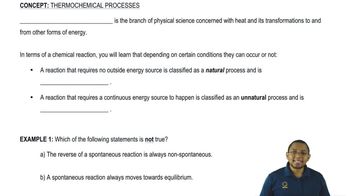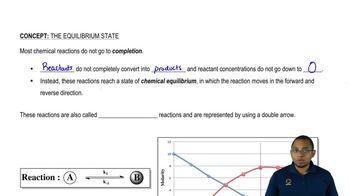Textbook Question
What is meant by the term 'chemical equilibrium'? Must amounts of reactants and products be equal at equilibrium?
351
views
 Verified Solution
Verified Solution



 3:42m
3:42mMaster Chemical Equilibrium Concept 1 with a bite sized video explanation from Jules Bruno
Start learning
